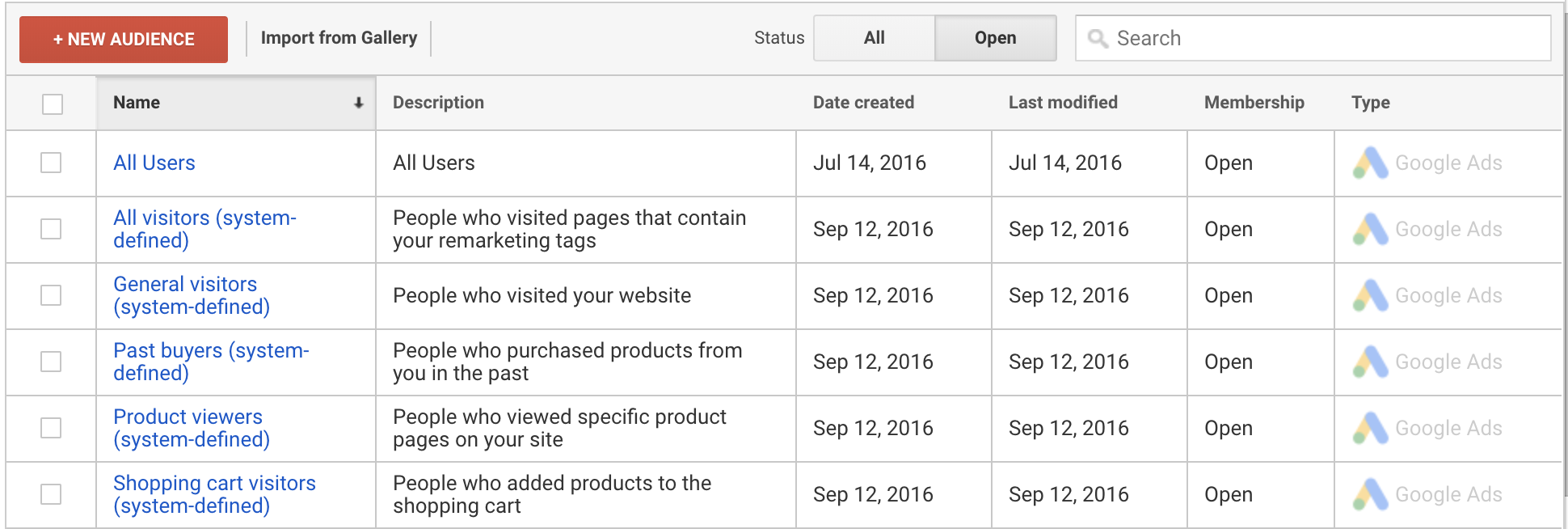Step-by-Step Tutorial: Remarketing In Google Analytics
Step-by-Step Tutorial: Remarketing In Google Analytics
Blog Article
Taking Advantage Of Remarketing in Google Analytics: A Comprehensive Overview
Utilizing remarketing in Google Analytics provides services a calculated side in reaching out to potential customers. This guide will drop light on the vital steps involved in using the full potential of remarketing in Google Analytics, leading to improved advertising and marketing end results.
Comprehending Remarketing in Google Analytics
Remarketing in Google Analytics enables companies to strategically target users that have previously interacted with their internet site or mobile app. By leveraging information from Google Analytics, organizations can produce customized remarketing checklists based on user actions, such as web pages gone to, actions taken, or details goals achieved. This powerful device enables businesses to re-engage with customers who have actually revealed interest in their services or products, ultimately boosting the possibility of conversion.
Comprehending the various sorts of remarketing techniques is important for a successful campaign - What Is “Remarketing” In Google Analytics?. Google Analytics provides various alternatives, including conventional remarketing, dynamic remarketing, and remarketing checklists for search ads (RLSA) Each kind offers a distinct objective and can be customized to meet details marketing goals
Additionally, assessing the performance of remarketing campaigns is important for optimizing results. Google Analytics supplies useful understandings right into the performance of various remarketing techniques, allowing organizations to make data-driven choices and fine-tune their targeting approach. By continuously checking and adjusting remarketing efforts based on analytics data, services can make the most of ROI and drive success in their marketing campaigns.
Establishing Remarketing Projects

After establishing audience lists, the next step is to link Google Analytics with Google Ads. By connecting these two platforms, services can flawlessly move audience checklists from Google Analytics to Google Advertisements for remarketing purposes. This combination permits for even more accurate targeting and far better project efficiency.
Once the accounts are connected, services can produce remarketing projects in Google Ads utilizing the target market provides formerly defined in Google Analytics. These campaigns can be personalized with details advertisement creatives, messaging, and bidding techniques to properly re-engage with previous visitors and drive conversions. By following these steps, services can take advantage of the power of remarketing to improve their advertising you can find out more and marketing initiatives and enhance ROI.
Making Use Of Audience Division Approaches

Predefined segments in Google Analytics permit you to promptly examine typical target market categories like new individuals, returning users, or individuals have a peek at these guys who completed a particular goal on your website. Personalized segments, on the other hand, enable you to produce distinct sections based upon certain criteria that are necessary to your company purposes. Dynamic remarketing lists immediately change based on individual behavior, showing individualized ads to users who have connected with your site in particular methods.
Analyzing Remarketing Efficiency Metrics
Upon evaluating the performance of remarketing projects in Google Analytics, the analysis of key efficiency metrics offers important understandings right into audience involvement and conversion prices. By diving into metrics such as click-through prices (CTR), conversion rates, cost per purchase (CPA), and return on advertisement spend (ROAS), marketing professionals can determine the success of their remarketing efforts. Assessing these metrics makes it possible for online marketers to maximize projects, refine target market targeting, and allocate budget plans properly to boost general remarketing performance.
Optimizing Remarketing Approaches
When refining remarketing approaches in Google Analytics, concentrating on target market segmentation is extremely important for achieving campaign success. By dividing your audience into specific sectors based on their habits, demographics, or rate of interests, you can tailor your ads better to each team. This targeted technique increases the chance of involving users who have actually currently shown interest in your products or solutions, bring about higher conversion prices.
One more essential element of optimizing remarketing strategies is continually screening and refining your projects (What Is “Remarketing” In Google Analytics?). A/B testing different advertisement creatives, messaging, or offers can help you determine what reverberates finest with your audience and drives the most conversions. By examining the performance of these examinations in Google Analytics, you use this link can make data-driven choices to optimize your remarketing efforts better
Moreover, leveraging vibrant remarketing can significantly enhance your project results. This function permits you to show tailored advertisements to users based on their previous interactions with your website, showcasing solutions or products they have actually formerly checked out. By providing tailored content to individuals based on their actions and interests, dynamic remarketing can help enhance interaction and drive conversions.
Final Thought
Finally, using remarketing in Google Analytics is a calculated strategy to target users that have actually formerly engaged with a web site. By creating tailored target market lists and making use of audience segmentation strategies, services can optimize remarketing advocate boosted conversion prices. Assessing performance metrics and continually enhancing methods are vital for optimizing the effectiveness of remarketing efforts.
Google Analytics provides different options, including basic remarketing, dynamic remarketing, and remarketing listings for search ads (RLSA)After setting up target market lists, the next step is to connect Google Analytics with Google Advertisements. By connecting these 2 platforms, businesses can seamlessly move audience lists from Google Analytics to Google Ads for remarketing functions.As soon as the accounts are linked, organizations can produce remarketing campaigns in Google Advertisements utilizing the target market notes previously defined in Google Analytics.When refining remarketing techniques in Google Analytics, concentrating on audience segmentation is paramount for attaining project success.
Report this page